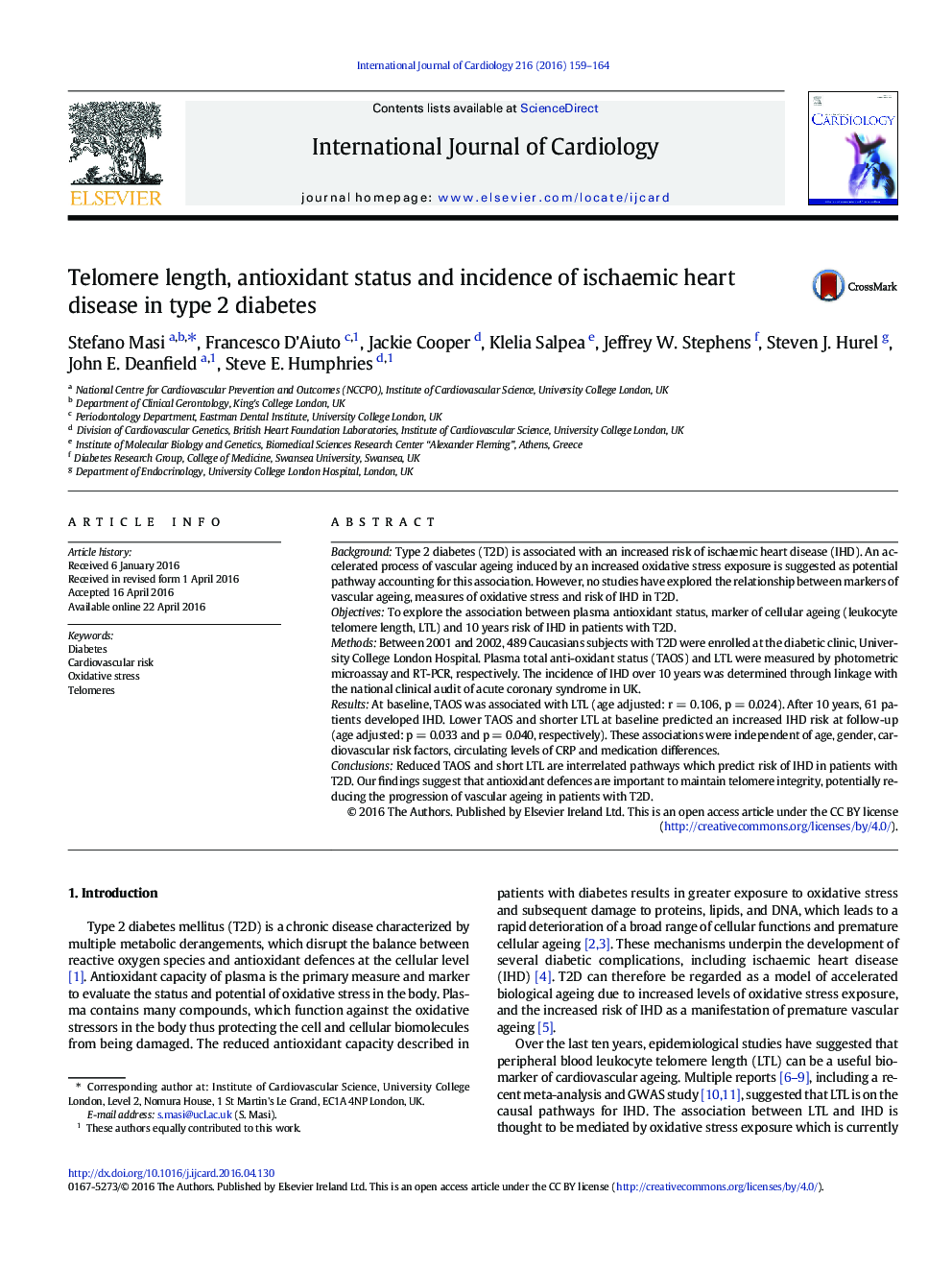| Article ID | Journal | Published Year | Pages | File Type |
|---|---|---|---|---|
| 5963801 | International Journal of Cardiology | 2016 | 6 Pages |
BackgroundType 2 diabetes (T2D) is associated with an increased risk of ischaemic heart disease (IHD). An accelerated process of vascular ageing induced by an increased oxidative stress exposure is suggested as potential pathway accounting for this association. However, no studies have explored the relationship between markers of vascular ageing, measures of oxidative stress and risk of IHD in T2D.ObjectivesTo explore the association between plasma antioxidant status, marker of cellular ageing (leukocyte telomere length, LTL) and 10 years risk of IHD in patients with T2D.MethodsBetween 2001 and 2002, 489 Caucasians subjects with T2D were enrolled at the diabetic clinic, University College London Hospital. Plasma total anti-oxidant status (TAOS) and LTL were measured by photometric microassay and RT-PCR, respectively. The incidence of IHD over 10 years was determined through linkage with the national clinical audit of acute coronary syndrome in UK.ResultsAt baseline, TAOS was associated with LTL (age adjusted: r = 0.106, p = 0.024). After 10 years, 61 patients developed IHD. Lower TAOS and shorter LTL at baseline predicted an increased IHD risk at follow-up (age adjusted: p = 0.033 and p = 0.040, respectively). These associations were independent of age, gender, cardiovascular risk factors, circulating levels of CRP and medication differences.ConclusionsReduced TAOS and short LTL are interrelated pathways which predict risk of IHD in patients with T2D. Our findings suggest that antioxidant defences are important to maintain telomere integrity, potentially reducing the progression of vascular ageing in patients with T2D.
